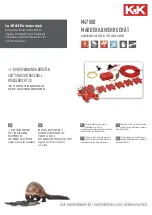
3
System Description
EDBC250SIO | 2.0
14
3
System Description
3.1
EtherCAT® – Ethernet Control
EtherCAT® is the most powerful Ethernet-based fieldbus system currently available on the
market. EtherCAT puts up the top speed mark, and its flexible topology and simple
configuration make it the perfect means of controlling extremely fast processes. To give you a
clue: 1000 I/Os can be addressed in 30 μs.
Because of its high performance, the simple wiring and its open protocol support, EtherCAT is
often used as a fast motion control and I/O bus driven by an industrial PC or in conjunction
with control technology on a smaller scale.
Its interconnections between the controller at one end and both the I/O modules and drives at
the other are as fast as those of a backplane bus. EtherCAT controllers thus nearly act like
centralised control systems, overcoming the issue of bus transfer times that conventional
fieldbus systems are burdened with.
3.2
c250-S Safety System
The c250-S System consists of the Safety bus coupler, the Safety controller and a range of
Lenze Safety I/O-modules.
The Safety bus coupler converts the physical transfer technology (twisted pair) to LVDS (E-bus)
and generates the system voltages required by the LVDS modules. The standard 100 Base Tx
lines used for office network communications connect to the one side, the Safety I/O-modules
for the process signals connect to the other. This is how the Ethernet EtherCAT protocol is
retained right through to the last Safety I/O-module.
The c250-S Safety System allows users to add Safety I/O-modules with safe signals to the
EtherCAT control unit, making the separate wiring of safety circuits a thing of the past. The
EtherCAT protocol is used to transfer both safe and standard signals to the Safety controller
c250-S. This integrated transfer process is based on FSoE (Fail Safe over EtherCAT), the safety
protocol certified by TÜV, the German Technical Testing & Inspection Association.















































